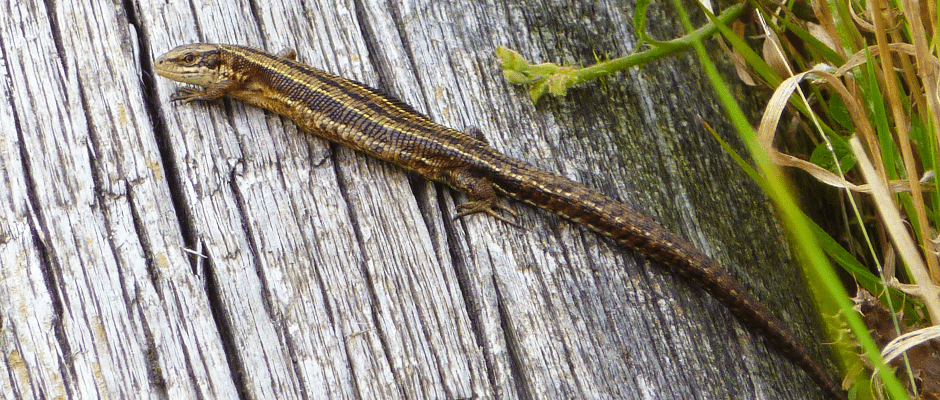Share this article
Climate Change May Hurt Survival of Common Lizards
A couple of degrees of difference can make a huge difference when it comes to the survival of lizards in a changing climate, according to new research.
“While a two-degrees warmer climate might seem beneficial at first, as it leads to faster growth of juvenile lizards and earlier access to reproduction, it also leads to lower survival in adult individuals, which should endanger population survival,” said coauthor Elvire Bestion of Exeter University in a release. The study was recently published in PLOS Biology.
The researchers used a system of semi-natural enclosures with populations of common lizards (Zootoca vivipara) in which they could manipulate the temperatures to create two different climates. One was similar to climates today and another 2 degrees Celsius warmer — the change predicted to occur by 2100.
In the 18 populations they put into the warmed climate enclosures, they found that adult lizards had lower survival rates, and that this could lead to decreased populations and even population extinctions within 20 years.
Coauthor Julien Cote, a biologist at the Laboratoire Evolution et Diversité Biologique in France, said that while the results “might seem dramatic,” they wouldn’t necessarily predict extinction of all common lizards in Eurasia, but rather that populations along the south of their range could suffer a lot as the weather heats up.
In a study covered by TWS earlier this year, researchers found that lizards can be extremely finicky over weather changes, whether warmer or colder. Crested anoles (Anolis cristatellus) in Puerto Rico showed less activity outside a certain narrow temperature range, which has implications for reproduction and survival.
Bestion also said that they witnessed female lizards laying eggs twice during the summer in warmer conditions whereas it usually only happened once. All of these results may show a shift in demographic strategy in which lizards live shorter lives but have higher reproduction rates.
We can wonder whether this strategy shift may help adaptation of populations to warmer climates over time,” Bestion said.
Header Image: Common lizard. Image Credit: dluogs, licensed by cc 2.0








